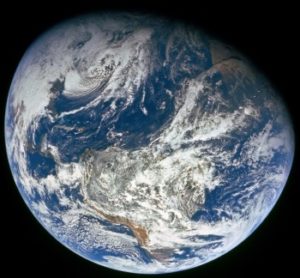by University of Texas at Austin, November 15, 2018 in ScienceDaily
A new study by The University of Texas at Austin has demonstrated a possible link between life on Earth and the movement of continents. The findings show that sediment, which is often composed of pieces of dead organisms, could play a key role in determining the speed of continental drift. In addition to challenging existing ideas about how plates interact, the findings are important because they describe potential feedback mechanisms between tectonic movement, climate and life on Earth.
The study, published Nov. 15 in Earth and Planetary Science Letters, describes how sediment moving under or subducting beneath tectonic plates could regulate the movement of the plates and may even play a role in the rapid rise of mountain ranges and growth of continental crust
…

by David Middleton, November 17, 2018 in WUWT
Why 536 was ‘the worst year to be alive’
By Ann Gibbons Nov. 15, 2018
Ask medieval historian Michael McCormick what year was the worst to be alive, and he’s got an answer: “536.” Not 1349, when the Black Death wiped out half of Europe. Not 1918, when the flu killed 50 million to 100 million people, mostly young adults. But 536. In Europe, “It was the beginning of one of the worst periods to be alive, if not the worst year,” says McCormick, a historian and archaeologist who chairs the Harvard University Initiative for the Science of the Human Past.
A mysterious fog plunged Europe, the Middle East, and parts of Asia into darkness, day and night—for 18 months. “For the sun gave forth its light without brightness, like the moon, during the whole year,” wrote Byzantine historian Procopius. Temperatures in the summer of 536 fell 1.5°C to 2.5°C, initiating the coldest decade in the past 2300 years. Snow fell that summer in China; crops failed; people starved. The Irish chronicles record “a failure of bread from the years 536–539.” Then, in 541, bubonic plague struck the Roman port of Pelusium, in Egypt. What came to be called the Plague of Justinian spread rapidly, wiping out one-third to one-half of the population of the eastern Roman Empire and hastening its collapse, McCormick says.
…
by Rud Itsvan, November 17, 2018 in WUWT
WUWT has posted several excellent articles by Jim Steele on how global warming alarmism uses corals as the poster child for warming and acidifying oceans, none of which is scientifically justified. A brief review follows, calling attention to a recently discovered additional adaptation mechanism not covered AFAIK by Jim Steele’s posts. The motivation for this post was triggered by a recent lunch with newish neighbor Charles the Moderator (CtM), and his sharing many wonderful underwater photographs of the coral reef he now dives frequently off Pompano Beach (same reef system as off Fort Lauderdale, just a few miles further north and more conveniently onshore).
…
by P. Homewood, November 17, 2018 in NotalotofPeopleKnowThat
It’s worth taking a closer look at the claim made last week that India is leading the world in tackling climate change.
The claim was based on India’s latest National Electricity Plan (NEP), which was published in April 2018. Below is the current situation for installed capacity, according to the NEP:

…
La géologie, une science plus que passionnante … et diverse


